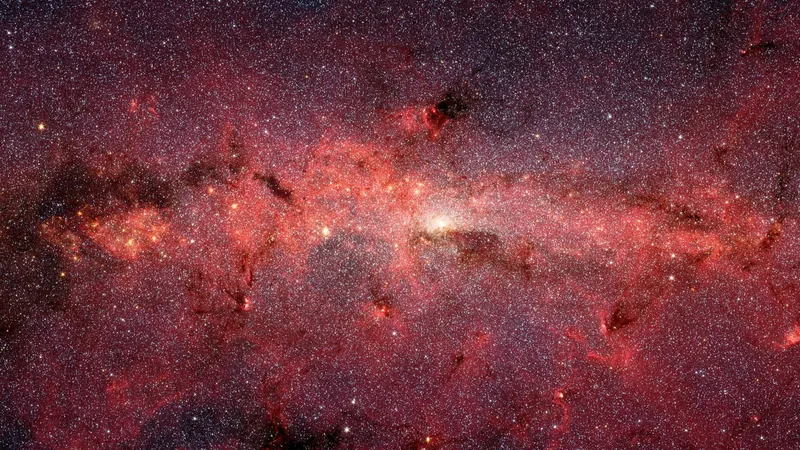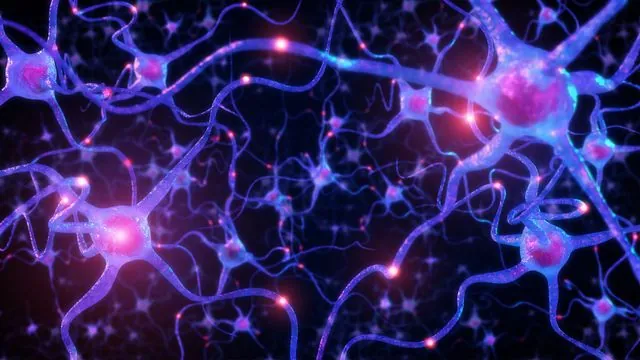
The Mind-Bending Mystery: Where is the Center of the Universe?
2025-07-13
Author: Siti
Unlocking the Secrets of Our Expanding Universe
About a century ago, scientists faced a conundrum that shook the very foundations of physics. Albert Einstein’s theory of general relativity, published in 1915 and already gaining traction among scientists worldwide, suggested that the universe was static – unchanging and immutable. However, as astronomers pointed their powerful telescopes to the night sky, they discovered something astonishing: the universe was expanding!
This revelation forced scientists to rethink Einstein's theory. They realized that his equations did not rule out an expanding universe; rather, they allowed for a dynamic cosmos. With fresh mathematical models, they began to illustrate an ever-evolving universe.
What Does ‘Expansion’ Really Mean?
So, what does it mean when we say the universe is expanding? On Earth, ‘expanding’ typically means getting bigger. In cosmic terms, it also means that everything is moving away from everything else. When we observe distant galaxies, they appear to be receding from us, and intriguingly, the farther away they are, the faster they seem to be moving.
One common misconception is to visualize the universe’s creation like a firework display, with galaxies shooting away from a central explosion. This analogy, while vivid, is misleading. It implies a central point of origin, which the actual expansion of the universe does not support. Instead, it's more accurate to say that the very fabric of space itself is stretching, pushing galaxies farther apart.
The Balloon Analogy: A Closer Look
Imagine putting dots on a balloon’s surface. As you blow up the balloon, those dots move farther apart—not because they are moving, but because the surface they are on is expanding. In this analogy, the dots represent galaxies, while the balloon’s surface symbolizes the universe itself.
Yet this analogy also has its limitations. The balloon, being a tangible object, suggests a two-dimensional surface plus a three-dimensional interior. However, the universe does not have an interior in the same way. Thus, it fails to provide a definitive answer to the question: Where is the center of the universe?
The Heart of the Matter: No Center to Be Found
Asking, 'Where's the center of the universe?' is akin to asking, 'Where's the center of the surface of a balloon?' There simply isn’t one. On the surface of the balloon, no matter how far you travel, you will never find a central point; the same holds true for our universe.
What complicates matters further is that the universe operates in four dimensions—incorporating both space and time. While our brains typically separate these concepts, they are intertwined in a single reality known as 'space-time.' This intricacy challenges our intuitive understanding of cosmic mechanics.
The Vastness of Cosmic Expansion
And as if that weren’t enough, the question of what drives this endless expansion of the universe remains a puzzle that scientists continue to unravel. The answer to our question about the center of the universe offers just a glimpse into the beautiful enigma that surrounds us—a cosmos where everything is expanding, everywhere, and all at once.
As we delve deeper into these cosmic mysteries, we confront the limits of our human intuition, revealing the strange yet stunning nature of our universe.



 Brasil (PT)
Brasil (PT)
 Canada (EN)
Canada (EN)
 Chile (ES)
Chile (ES)
 Česko (CS)
Česko (CS)
 대한민국 (KO)
대한민국 (KO)
 España (ES)
España (ES)
 France (FR)
France (FR)
 Hong Kong (EN)
Hong Kong (EN)
 Italia (IT)
Italia (IT)
 日本 (JA)
日本 (JA)
 Magyarország (HU)
Magyarország (HU)
 Norge (NO)
Norge (NO)
 Polska (PL)
Polska (PL)
 Schweiz (DE)
Schweiz (DE)
 Singapore (EN)
Singapore (EN)
 Sverige (SV)
Sverige (SV)
 Suomi (FI)
Suomi (FI)
 Türkiye (TR)
Türkiye (TR)
 الإمارات العربية المتحدة (AR)
الإمارات العربية المتحدة (AR)